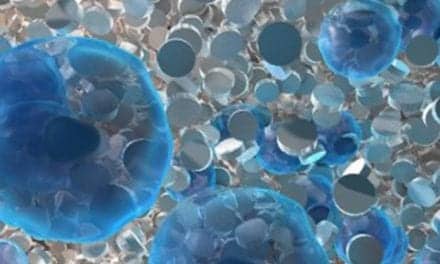A recently developed “microcapsule” treatment delivery method may help reduce inflammation in cartilage impacted by osteoarthritis (OA) and reverse tissue damage. A news release issued by Queen Mary University of London (QMUL), where the research was conducted, states that a naturally occurring protein molecule called C-type natriuretic peptide (CNP) is known to reduce inflammation and aid in the repair of damaged tissue.
Yet, the release notes that CNP cannot be used to treat OA in patients, as it cannot target the damaged area, even when the protein is injected into the cartilage tissue. To this end, researchers constructed microcapsules, 2 microns in diameter, with individual layers containing CNP that could release the protein slowly and thus deliver treatment in the most effective way.
Results from experiments on samples of cartilage taken from animals indicate that the microcapsules could deliver the anti-inflammatory CNP in a highly effective way. According to researchers, the injections of microcapsules may, in the future, be used to heal damaged cartilage in OA patients. The injections could be delivered by a GP, the release adds.
Tina Chowdhury, PhD, QMUL’s School of Engineering and Materials Science, research leader, explains in the release, “If this method can be transferred to patients, it could drastically slow the progression of osteoarthritis and even begin to repair damaged tissue.”
Chowdhury adds that CNP is currently available to treat other conditions, such as skeletal diseases and cardiovascular repair. If simple injections using microcapsules could be designed, she says, the technology would have the potential to be an effective and relatively economic treatment that could be delivered in the clinic or at home.
Stephen Simpson, PhD, director of research at Arthritis Research UK, says that current treatment options for OA are limited, and as a result, developing new ways to treat the condition is currently a major area of research.
“The focus is not only about identifying promising new targets, as delivery of a drug to the appropriate site can often be as challenging as developing the treatment itself, and can hinder getting otherwise effective medicines to patients. This work represents a good example of how researchers are developing innovative new approaches to get around this problem,” Simpson says.
[Source: Queen Mary University London]





